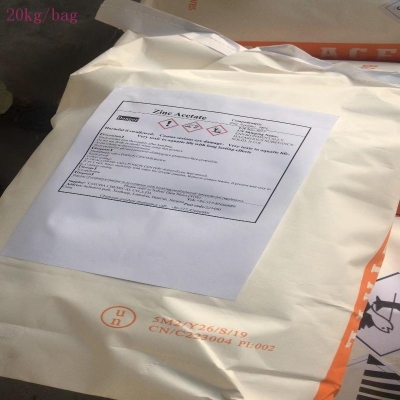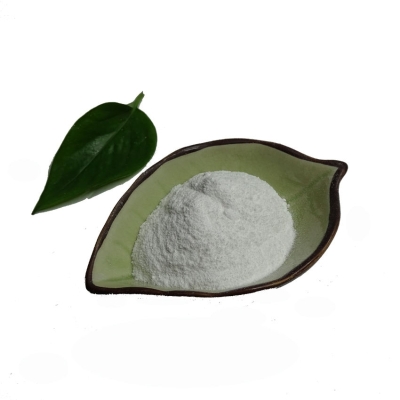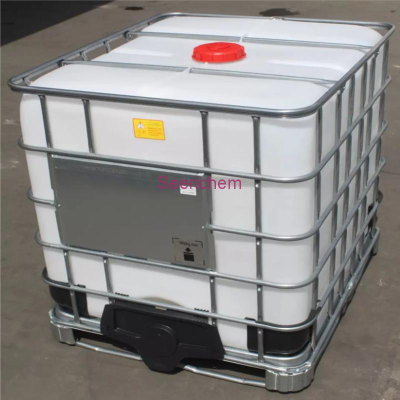-
Categories
-
Pharmaceutical Intermediates
-
Active Pharmaceutical Ingredients
-
Food Additives
- Industrial Coatings
- Agrochemicals
- Dyes and Pigments
- Surfactant
- Flavors and Fragrances
- Chemical Reagents
- Catalyst and Auxiliary
- Natural Products
- Inorganic Chemistry
-
Organic Chemistry
-
Biochemical Engineering
- Analytical Chemistry
-
Cosmetic Ingredient
- Water Treatment Chemical
-
Pharmaceutical Intermediates
Promotion
ECHEMI Mall
Wholesale
Weekly Price
Exhibition
News
-
Trade Service
The just-concluded Central Economic Work Conference mentioned the structural reform of the agricultural supply side, and emphasized the need to increase the supply of green and high-quality agricultural products in a prominent position, that is, the problem to be solved by the supply-side reform is to adjust the structure of agricultural products and reform the price formation mechanism of important agricultural products such as grain.
The essence lies in stabilizing the prices of various crops, while doing a good job in digesting policy-based food stocks, and preventing the sharp drop in food prices since the beginning of 16 years, especially corn.
The overall overcapacity of the chemical fertilizer industry is still heavy.
In the future, the industry will strictly implement the zero-growth fertilizer program issued by the Ministry of Agriculture, accelerate the elimination of small businesses, and continue to expand and strengthen the leading companies.
At the same time, the profitability of chemical fertilizer companies continues to rise and there are limitations.
Development requires transformation and upgrading.
The core program for zero growth of chemical fertilizers is "precision", "adjustment", "reform" and "replacement", that is, precise fertilization to improve the utilization rate of chemical fertilizers; adjust the fertilizer structure to use new fertilizers or high-efficiency fertilizers; change the spreading to mechanical fertilization or water and fertilizer integration; organic Fertilizer replaces traditional chemical fertilizers, which provides a huge development space for leading compound fertilizer companies.
There are currently more than 3,400 compound fertilizer companies, and it is expected to be reduced to more than 1,000 in the next five years.
The transformation of leading companies is also more active.
While developing new products, Kingenta actively engages in international mergers and acquisitions to open up the fertilizer export market; Stanley expands upstream and downstream to build an integrated platform for agricultural services; Xinyangfeng actively develops downstream, high-end fertilizers and fruit industry and facilities agriculture.
Elemental fertilizer: At present, the surplus of nitrogen fertilizer is about 24%, and the surplus of phosphate fertilizer is about 34%.
In the past 16 years, the overall urea industry has eliminated more than 3 million tons of capacity, which is basically due to gas.
It is expected that the new tariff policy will be abolished in 2017.
The export tariff of 100 yuan/ton for phosphate fertilizer and 80 yuan/ton for urea will drive the export volume of phosphate fertilizer by then.
Urea is the weather vane of the overall fertilizer price.
Due to high coal prices, it is difficult to resume production in some old devices.
It is expected that the price will continue to be strong at least until the spring plowing in the first quarter of next year.
Pesticides: The approval of Monsanto's genetically modified seeds and the expected liberalization of domestic genetically modified policies will drive the demand for pesticides such as glyphosate and dicamba, and the continued tightening of environmental inspections in the pesticide industry will accelerate the elimination of small production capacity and ease industry supply The status quo of surplus makes the market share of superior enterprises continue to increase.
The 13th round of environmental protection inspections mainly targeted large pesticide companies.
Although four companies were on the list, the follow-up policies were nowhere to be seen.
Recently, environmental protection inspections have been strengthened.
For example, Suzhou required to reduce the number of chemical companies in the park.
The verification of glycine, etc.
, affected by this, glyphosate rose from the bottom 17,000 yuan/ton to 25,000 yuan/ton, and glufosinate and imidacloprid also continued to rise.
The essence lies in stabilizing the prices of various crops, while doing a good job in digesting policy-based food stocks, and preventing the sharp drop in food prices since the beginning of 16 years, especially corn.
The overall overcapacity of the chemical fertilizer industry is still heavy.
In the future, the industry will strictly implement the zero-growth fertilizer program issued by the Ministry of Agriculture, accelerate the elimination of small businesses, and continue to expand and strengthen the leading companies.
At the same time, the profitability of chemical fertilizer companies continues to rise and there are limitations.
Development requires transformation and upgrading.
The core program for zero growth of chemical fertilizers is "precision", "adjustment", "reform" and "replacement", that is, precise fertilization to improve the utilization rate of chemical fertilizers; adjust the fertilizer structure to use new fertilizers or high-efficiency fertilizers; change the spreading to mechanical fertilization or water and fertilizer integration; organic Fertilizer replaces traditional chemical fertilizers, which provides a huge development space for leading compound fertilizer companies.
There are currently more than 3,400 compound fertilizer companies, and it is expected to be reduced to more than 1,000 in the next five years.
The transformation of leading companies is also more active.
While developing new products, Kingenta actively engages in international mergers and acquisitions to open up the fertilizer export market; Stanley expands upstream and downstream to build an integrated platform for agricultural services; Xinyangfeng actively develops downstream, high-end fertilizers and fruit industry and facilities agriculture.
Elemental fertilizer: At present, the surplus of nitrogen fertilizer is about 24%, and the surplus of phosphate fertilizer is about 34%.
In the past 16 years, the overall urea industry has eliminated more than 3 million tons of capacity, which is basically due to gas.
It is expected that the new tariff policy will be abolished in 2017.
The export tariff of 100 yuan/ton for phosphate fertilizer and 80 yuan/ton for urea will drive the export volume of phosphate fertilizer by then.
Urea is the weather vane of the overall fertilizer price.
Due to high coal prices, it is difficult to resume production in some old devices.
It is expected that the price will continue to be strong at least until the spring plowing in the first quarter of next year.
Pesticides: The approval of Monsanto's genetically modified seeds and the expected liberalization of domestic genetically modified policies will drive the demand for pesticides such as glyphosate and dicamba, and the continued tightening of environmental inspections in the pesticide industry will accelerate the elimination of small production capacity and ease industry supply The status quo of surplus makes the market share of superior enterprises continue to increase.
The 13th round of environmental protection inspections mainly targeted large pesticide companies.
Although four companies were on the list, the follow-up policies were nowhere to be seen.
Recently, environmental protection inspections have been strengthened.
For example, Suzhou required to reduce the number of chemical companies in the park.
The verification of glycine, etc.
, affected by this, glyphosate rose from the bottom 17,000 yuan/ton to 25,000 yuan/ton, and glufosinate and imidacloprid also continued to rise.







